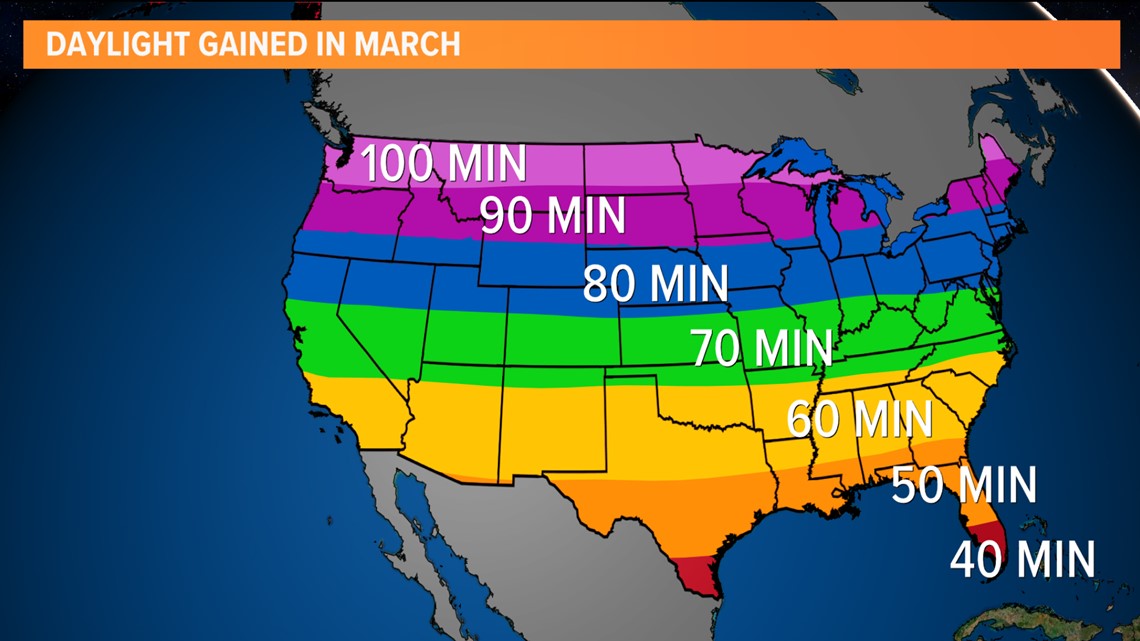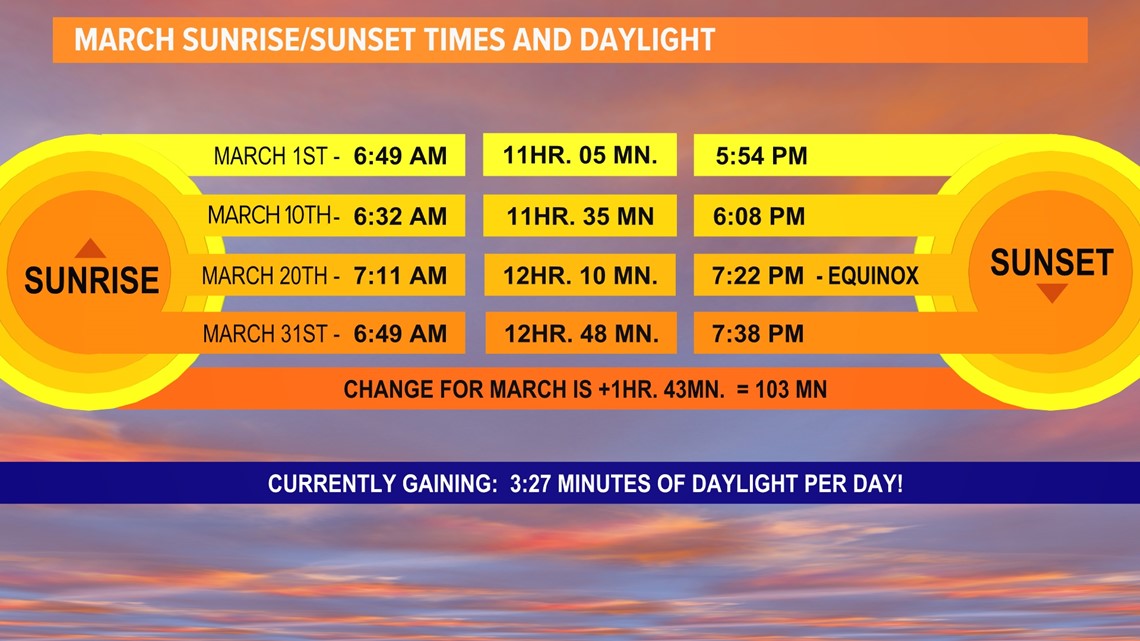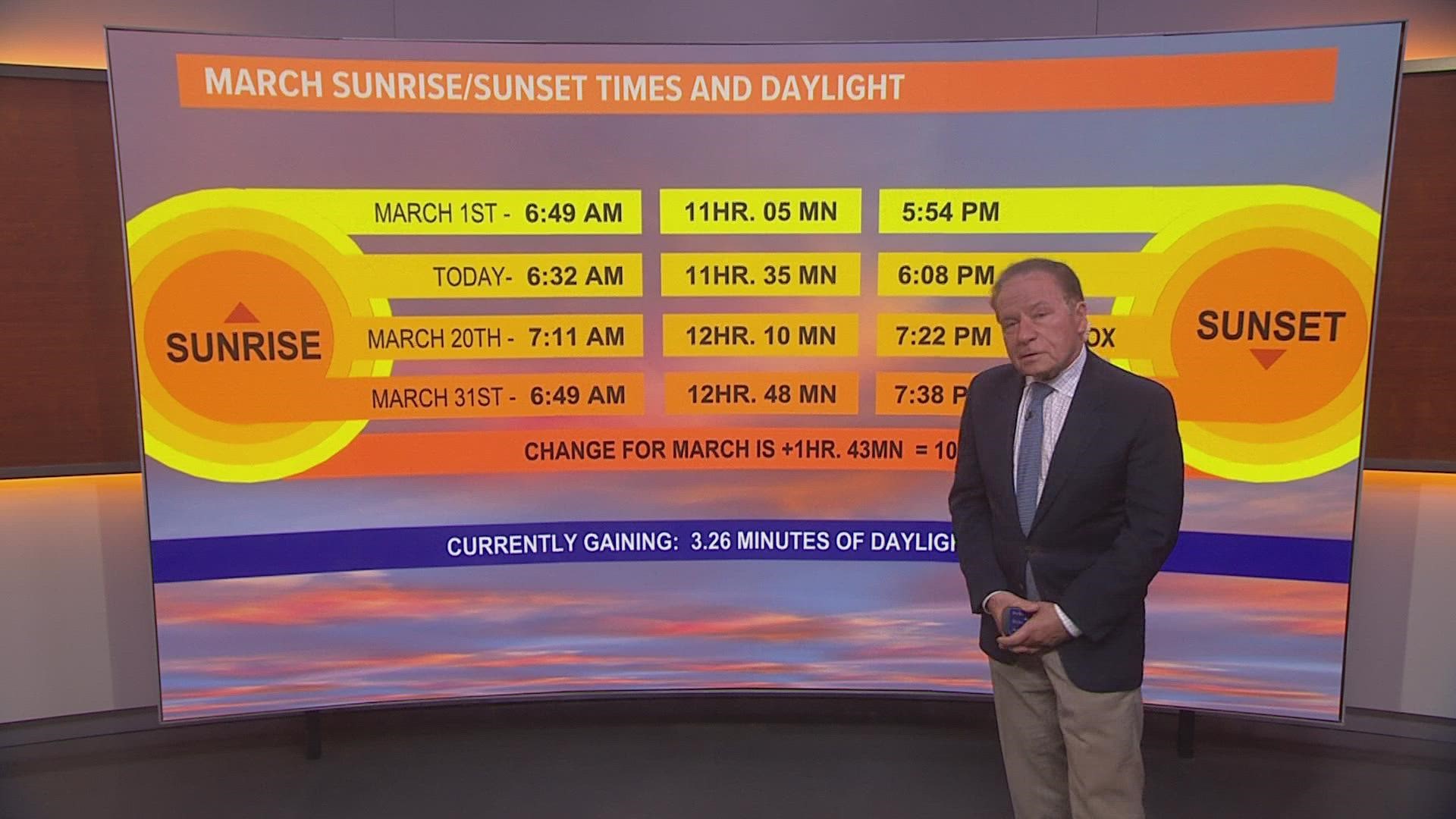SEATTLE — Spring has almost sprung in western Washington.
While the official start of spring doesn’t officially arrive until the equinox on March 20, days are beginning to get noticeably longer. And there’s a reason why.
We gain the more daylight in March than any other month, and it’s not because we “spring forward” for daylight saving time.
The fastest change in daylight occurs around the spring and fall equinoxes - gaining the most daylight in March and losing the most in September.
During March, Washington gains somewhere between 3-4 minutes of sunlight each day. This adds up to over 100 minutes of daylight gained during the month for the Seattle area and for most of the state.
The longer days make sense if you think about the solstices. We slowly started gaining more daylight in December on the winter solstice, a few seconds a day, but the amount gained accelerates through January, February and March. The opposite happens on the summer solstice – we start losing daylight each day.
To do that, the rate of change of daylight goes to zero at the solstices as the amount of daylight switches “directions.”
The daily change is much less significant as you go farther south. The southern edge of Florida and Texas only gain about 40 minutes of daylight in March.


Even farther south, Honolulu only gains a little over a minute of daylight a day. Their total sunlight gain for the month is only 36 minutes.
As dramatic as the change is in the Pacific Northwest, it is even greater farther towards the poles. Fairbanks, Alaska is currently gaining almost 7 minutes of daylight each day and is on its way to having 21 hours and 40 minutes of daylight at the summer solstice. That is a huge change from the darkness of the winter solstice with only 3 hours and 41 minutes of daylight.
Of course, the most noticeable change will be Sunday, March 13, 2022, when we “spring forward” for daylight saving time. Sunset on Sunday will be after 7 p.m. But if you’re an early riser, you’ll miss that hour of daylight Sunday morning when the sun won’t rise until almost 7:30 a.m.


Note the change to Daylight Saving Time on March 13.

